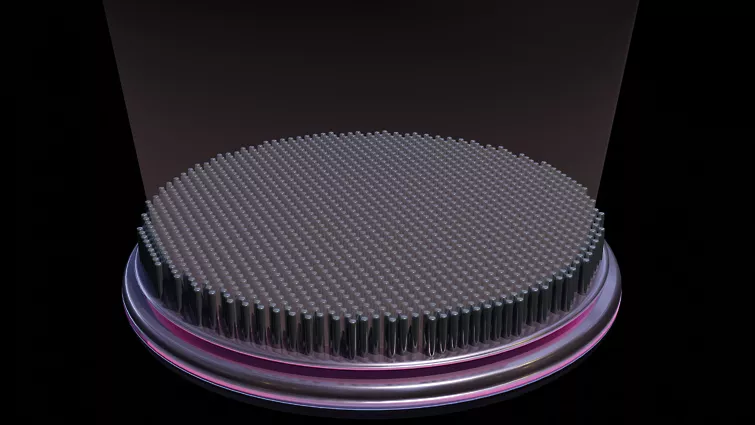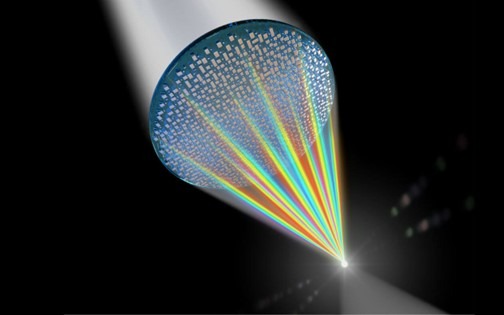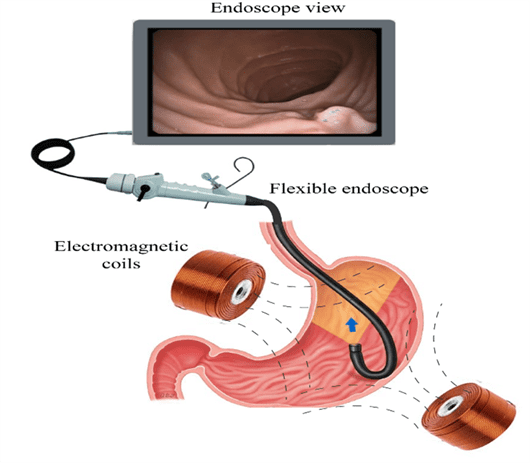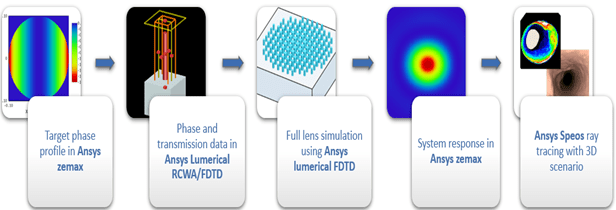- PRODUCTS
- SERVICES
- HARDWARE & IT
- LEARNING & DEVELOPMENT
- CADFEM INFORMS
CADFEM INFORMS OVERVIEW
- ABOUT US

Traditional lenses, which have been used for centuries, rely on curved glass or plastic to focus light. In contrast, metalenses utilize arrays of nanostructures on a flat surface to manipulate light at the nanoscale. These nanostructures can bend, focus, and shape light in ways that traditional lenses cannot, resulting in lenses that are much thinner, lighter, and capable of superior optical performance.
An endoscope is a minimally invasive optical device that allows one to look inside the body. It is used for medical diagnostics, biopsy, and image-driven surgery. The size of the device poses the main limitations on clinical applications. Using metalens reduces the size of the device and makes it useful for clinical applications.


A metalens endoscope requires a rigorous procedure to provide peak performance and precision. Here’s a condensed overview to the procedure, including the major steps:
The journey begins with Ansys OpticStudio, which creates a phase mask using diffractive optical components. The phase mask is significant because it manipulates light waves, guaranteeing accurate focusing and imaging capabilities that are required for high-quality endoscopic visuals.
Ansys Lumerical FDTD/RCWA then develops the metalens’ unit cell structure. This stage is critical for establishing the lens’s core building pieces and guaranteeing that light can be efficiently controlled at the nanoscale.
Following that, the whole metalens is built using Ansys Lumerical FDTD. The nearfield profile is then exported in Zemax beam file format (.zbf). This profile is critical because it captures the light’s behavior within the lens, which is required for precise system optimization.
The .zbf file is imported from Lumerical into Zemax, where the system is tuned for POP performance visualization. This stage guarantees that the endoscope system delivers the appropriate optical performance, providing clarity and precision in real-world applications.
Finally, Ansys Speos is utilized to visualize the device’s real-time use. This stage brings the design to life by enabling for an assessment of how the endoscope will work in real-world medical situations, assuring dependability and efficiency.
Following these precise processes allows for the creation and optimization of a metalens endoscope, opening the path for improved medical imaging options.

The integration of metalens technology into endoscopic systems offers numerous benefits, including enhanced image quality, miniaturization, and cost-effectiveness. These advantages make metalens endoscopes a promising tool for various medical applications, potentially transforming diagnostic and therapeutic procedures by providing superior imaging capabilities in a more compact and efficient form factor. As technology continues to evolve, it is likely to play an increasingly significant role in advancing medical imaging and patient care.
In the medical field, these kinds of invasive methods are useful. Using a combination of Zemax, Lumerical, and Ansys Speos provides a robust framework for designing and optimizing metalens endoscopes. Zemax aids in initial optical design and ray tracing, Lumerical offers precise nanostructure simulation and optimization, and Ansys Speos facilitates integration and thermal management. By leveraging these powerful tools, engineers can develop high-performance metalens endoscopes that enhance imaging capabilities and improve patient outcomes.


